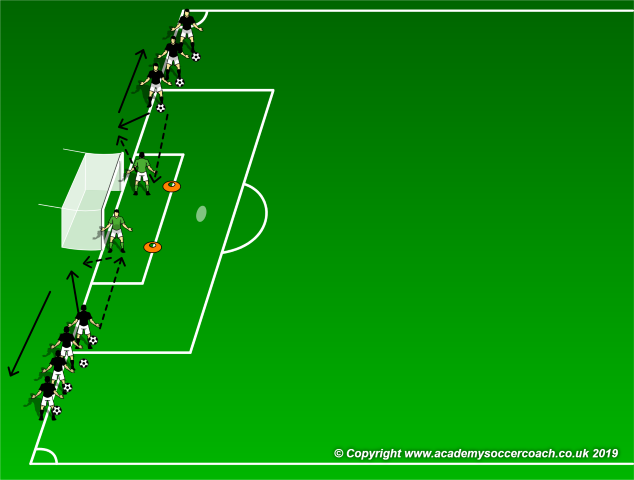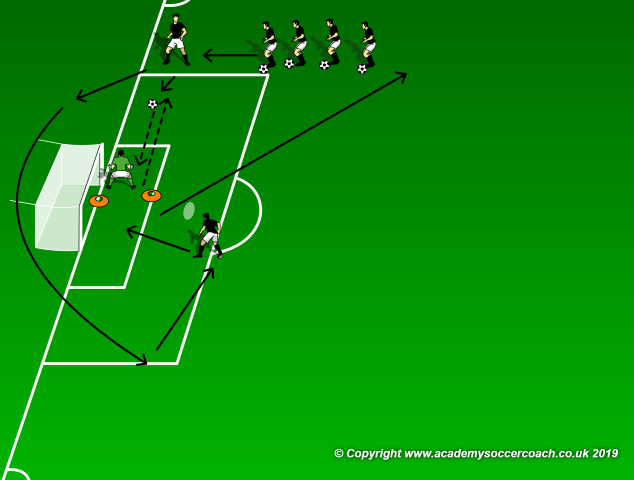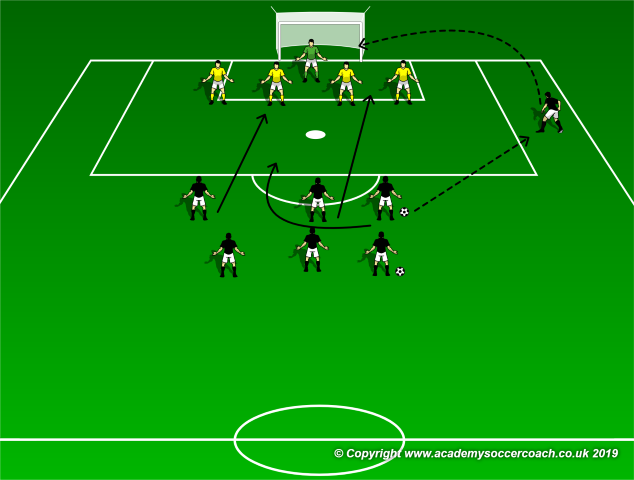- You are here:
- Home »
- Goalkeeping »
- Stopping A Near Post Cross
Stopping A Near Post Cross
By Mike Smith –
Over the course of my coaching career I have struggled with a contradiction in my coaching style. Offensively, I swear by just getting the ball down the field and making a team eat crosses. This is my shotgun approach, just keep the ball going across the opponents net and good things will happen,( hopefully the middle will soften up when they step out to stop us from crossing). However, defensively, I find myself thinking – “ if I can just keep a team out wide and make them serve long crosses, and prevent shots from inside my box, we’re gonna win a lot of games.” The best offensive tactic cannot be the best defensive tactic can it?
One of the things I make sure of when employing my contradictory style is having a keeper who can stop the ball from actually getting across. I have found when making a team play crosses actually plays into the way your keeper practices stopping offense every day, it can be a winning combination.
Set Up
As a warm up, have a line of servers, one on each post of the goal for teams with two keepers, roll in balls to the keeper. This is a standard warm up activity for a lot of teams, where the servers roll balls in central, left and right progressing up from the ground, knee, waist, shoulder and above the head areas.

After this, have the keepers roll a ball out to the server, who must attempt to cross it through a cone gate, where the keeper must make the save with their hands. ( a finisher can be located on the back side for crosses that get through as a progression.)

Final Progression / Coaching Points
Finally, set up a 3 attackers vs 4 defenders inside the box drill, with a 4th attacker free to hit a cross. Be sure to alternate crossing sides. The idea here is for the keeper to attempt to aggressively win crosses, so the coach should focus on good keeper positioning, communication and aggressively attacking the ball. As shown below, groups of 3 attackers play the ball from just outside the top of the 18 to the waiting service attacker. 4 defenders wait at the top of the 6 to pick up marks and defend the cross. While the serving attacker can serve from anywhere inside of 18 yards and all serves should go far post, the coach should make sure several services are made from deep and driven into the near post. After the service is made, the server may join the attack. Once the groups, and keeper, have gotten into a flow, make it a 4 v 4 activity inside the box, with the only requirement being all goals must be scored off a cross.

By Mike Smith
Currently the Head Coach for University Heights Academy Boys Soccer in Hopkinsville, KY , Mike is in his 14th year as a high school head coach with 23 years coaching experience overall and 34 year as a student and fan of the game. He holds a USSF D License.
